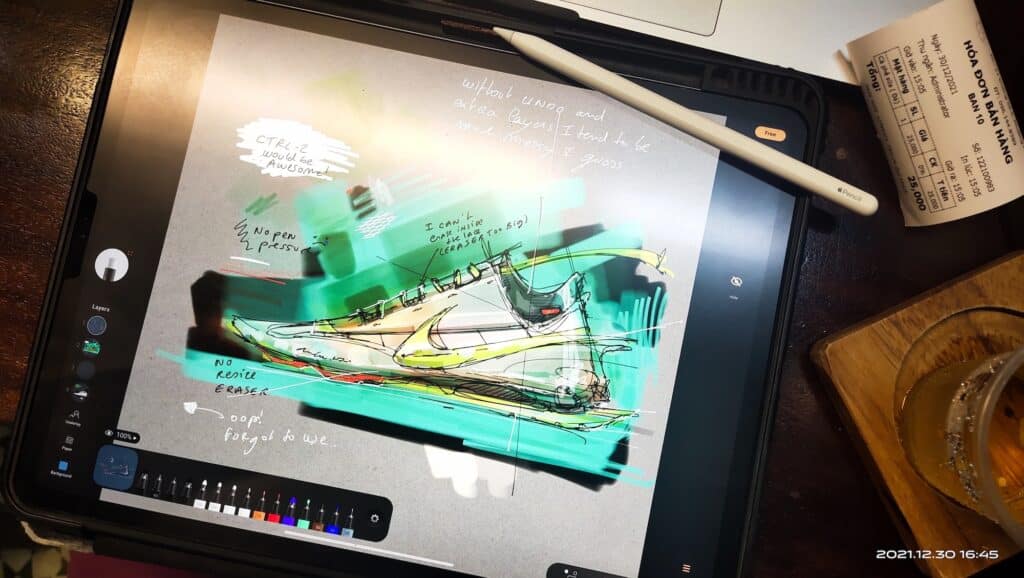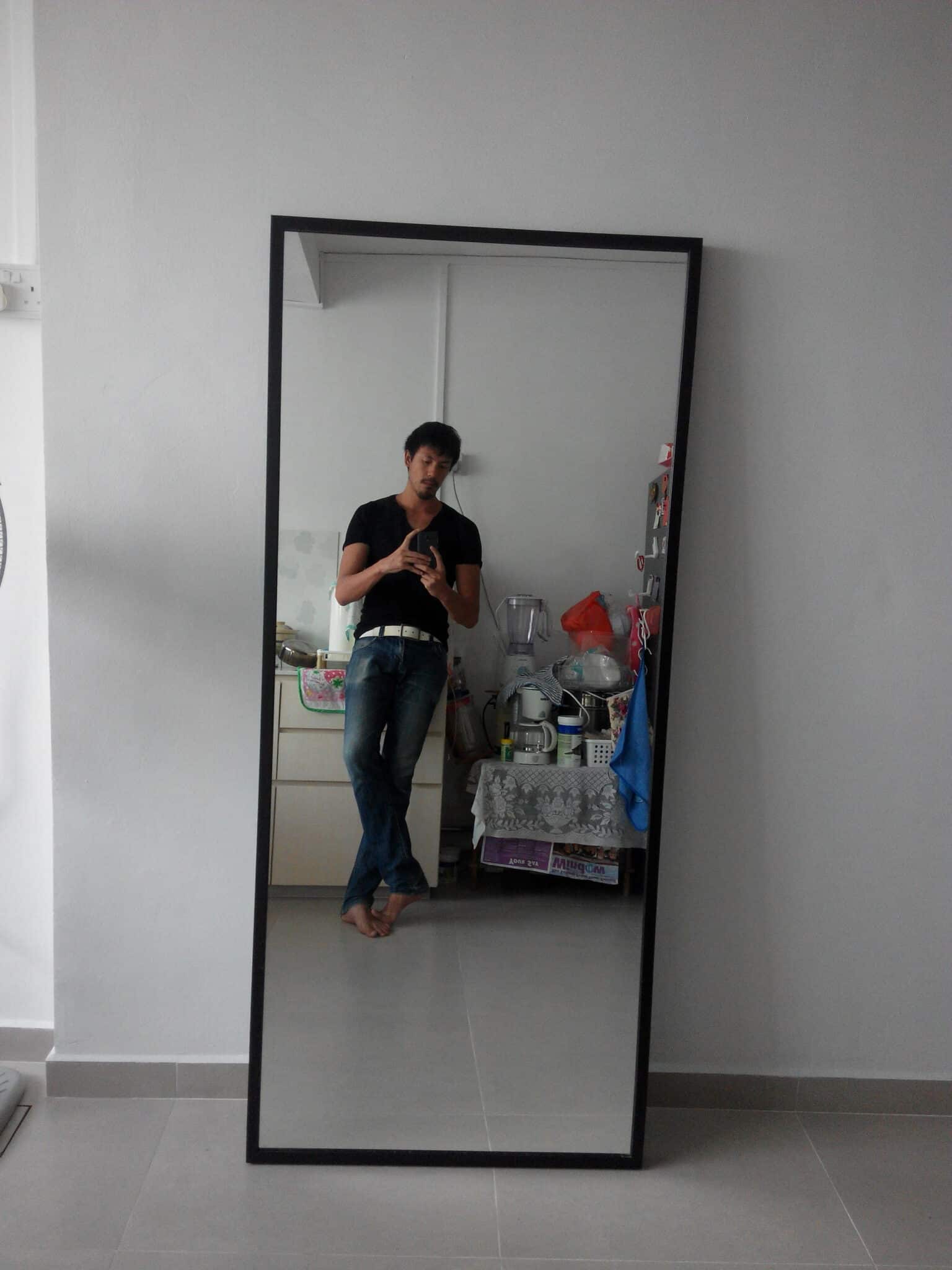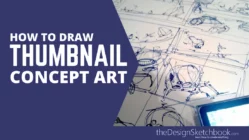Ready to take your first step toward becoming an artist or a designer?
These 7 essential tips on how to draw can instantly get you on the right track!
Let’s start drawing now!
This morning, Kavita (Seattle, Washington) sent me a message.
She loves sketching and dreams of her own footwear business!
Her husband bought a little sketchbook and a pencil for her as a present.
She would love sketching daily on it.
But she doesn’t really know how to start, and she feels fear of failing.
You know what?
She is not alone.
Most novice artists or designers face it and stagnate sometimes for years or forever… and never accomplish anything much.
Do you want to get rid of that sticky toxic feeling and start sketching daily as well?
If yes, stay with me. We’ll get rid of some “fake news” about drawing.

As I wrote back to Kavita to give her some insights, I started to talk soo much!
My girlfriend said: “Classic Chou-Tac” Haha!
I decided to share the DESIGN SKETCHING TIPS I gave her with the whole Design Sketchbook family too.
As we are all together beginners and expert sketchers on the same boat.
(Whenever you face an obstacle or got any questions about drawing, design, or creativity…, send me an email. I am always happy to read your messages and help you. You can send me your questions at choutac@thedesignsketchbook.com)
7 Creative Ideas for Starting Out As a Novice Artist
No, a Sketchbook is not about drawing a piece of art.

Facing the fear of failure is about dealing with our sense of perfection.
We worry we can’t keep up with the expectation.
We compare ourselves to others and are worried others would judge us.
So we find plenty of reasons to sabotage ourselves, and fake news tends to win our creative minds.
Today, let’s demystify them with these 7 TIPS to empower your mind with positivity!
Remember, more often than you think, imperfection is beautiful.

TIP 1 DRAW ON YOUR SKETCHBOOK FIRST PAGE NOW!
At the art shop, you buy a sketchbook. You feel excited!
But when you are back home, your hand is paralyzed to start drawing on the first page.
- “What to draw on it?”
- “It will be the first thing we see.”
- “It got to be good!”
- “I can’t mess it up.”
Do you know, the first step is the hardest?
It is not about physical difficulty, but actually a mental block we give to ourselves.
(And I am glad Kavita told me she did her first sketch of a shoe with one of my video tutorials :).
As soon as you start, you will be out of the starting block to keep up moving and practicing!


My recommendation is:
- Don’t buy an expensive sketchbook as a beginner, or don’t make it precious.
- You could even start with individual laser paper for printers, you could attach it with staples to make a notebook.
- No matter the format, a sketchbook is a place you feel good drawing in.
- It is your personal and intimate refuge for your ideas. A place your imagination feels cozy like home.
Remember, your good and bad thoughts and drawings are all welcome inside.
TIP 2 KEEP YOUR SKETCHBOOK PRIVATE
You saw crazy good videos of sketchbooks on Youtube.
You feel impressed and overwhelmed at the same time.
Remember, these drawings are the tip of the iceberg.
To get there, artists and designers draw a lot more on spare paper or research sketchbooks. These for years.
And they don’t show them to you. (And that’s totally fine)

My recommendation as a beginner is:
Do not start your sketchbook by making it “public” in mind.
You will release stress.
And you won’t be worried to mess up.
You will be yourself.
Use the videos of the artists and designers you love to inspire you and lift your ambition up.
Try to see what you like in diverse creators and import this stuff into your own sketchbook to study them.
You will create your own style.
Don’t get me wrong, I am not telling you to hide your sketches. I am just saying that we shouldn’t be slaves of social media (or anyone’s opinion). These are “just” communicating tools you could use to document your journey or show your best creations as a portfolio.
You decide what to show, and what to keep private. You are in control.
TIP 3 COLLECT YOUR IDEAS LIKE POKEMON!
Bad ideas, genius ideas, strange ideas… all deserve to board in your sketchbook.
Collect a variety of any kind of ideas like how you would “catch Pokemons”! 😛
Capturing ideas is a game you play daily to build a giant library of inspiration.
An idea can come up anytime!
If you don’t capture it on a temporary spare paper or your sketchbook,
there is a high chance you will forget it back home or design office.
You will remember you had a great idea, but can’t record what…

My recommendation is:
- Bring your sketchbook and pen anywhere you go with you.
- If a sudden idea pops up, do not hesitate to stop what you are currently doing (walking in a shopping mall, cooking, chatting with friends, gardening…), and draw. Your ideas matter.
- A sketchbook reveals your own path, your progression.
You could archive your sketchbooks in months or years. - Drawing is a lifelong journey, and we all start as a beginner. Right?
So let’s make plenty of “ugly drawings”! They are so much better and more fun than nothing! - Soon, you will compile thousands of daily sketches in plenty of your sketchbooks.
TIP 4 MIX IDEAS TO CREATE NEW IDEAS
Design is mostly about linking ideas together.
Sometimes, we could have a simple idea, that weeks later we may connect to another one, and they come up to be awesome!

My recommendation is:
- Love wasting your time.
- Draw without the intention to make anything useful or awesome.
- Most drawings you do will be “useless” in the long run.
However, you can’t predict which ones! - Creativity is also about quantity.
To raise your chances to create super cool projects is to draw a lot, even if you don’t really know what to do with them on the spot. - You want to gather data for you to dig in later, which will make sense one day in a new and matched context. To provoke ideas, I invite you to try the “What if” creative technique.
What if we combine X + Z?
TIP 5 MAKE BABY STEPS
As a beginner, when we have big goals we also see giant mountains to get there, while we should focus on climbing step by step smaller mountains.
To accomplish something big, you need to split the tasks into many bite-size drawing lessons. So you raise your sense of accomplishment and feel solid progression.
Start climbing a tiny and flat plain first.
No one started with Mont Everest!

My recommendation is:
- Start learning with the foundation of drawing with perspective, proportion, simple forms like cubes, cylinders, and spheres… without them you will be only able to copy at best.
- Learning how to draw is not difficult when it is explained simply in small steps. You will feel a sensation of achievement and keep going up with motivation.
- With guidance, you will learn how to “get out of the labyrinth” easily.
TIP 6 Draw with a kid mindset
Be curious, and excited! Be childish!
When you learn drawing, you jump from discoveries to discoveries like a child in a candy shop!
Each candy will be a sketching tip:
- a new app to sketch on,
- a new creative technique to draw in perspective,
- a new way to give your sketch a greater look,
- a better composition visual trick,
- a new digital way to add shadow…
You’ll want to try them all!
You will get better and better at becoming a “candy expert”.

My recommendation is:
Try new stuff, even if they look tough!
You may fail now, as you may not be ready yet. It’s fine!
Because your brain got to record something you like.
However, make sure to learn with a good foundation in parallel for a solid progression.
TIP 7 START DRAWING MANY CRAPPY DOODLES
When a designer has an idea, he doesn’t aim to draw a nice sketch at the beginning.
Why? Because it would slow his productivity and creativity down.
Imagine you have thousands of ideas and spend 2 hours on each. It wouldn’t make sense right?
A designer doodles plenty of crappy drawings to drop his ideas on paper fast.
Later on, you will have all the time to select the ones you want to refine, or further develop.
When you work as a design professional, you need to follow a certain creative path to present your projects. Drawing ugly is the first stage.

My recommendation is:
- Think Productivity.
As a designer, you will need to deliver your projects within tight deadlines. - Crappy doodles help you draw as if you would make a draft for a letter, or a mindmap.
Conclusion
We’ve explored 7 essential tips to help you start your sketching journey with confidence and joy.
Here’s a quick recap to keep you inspired:
- Take Action: Don’t let the fear of failure or perfectionism prevent you from taking that first step. Start with the basics, embrace imperfection, and keep moving forward.
- Set the Stage: Make your sketchbook a private, personal space where your creativity can thrive without judgment. Remember, it’s your journey, and you decide what to share and when.
- Capture and Collect: Treat your ideas like Pokémon, capturing them wherever they strike. Mix and match these ideas to create something new and exciting.
- Embrace the Mess: Understand that design often starts with many “crappy doodles.” It’s about productivity and quantity to fuel your creativity.
- Progress Over Perfection: Focus on your happiness and the value you bring to the world through your art. Mistakes are stepping stones, not roadblocks.
- Stay Curious: Keep that childlike wonder alive. Explore, experiment, and enjoy every new discovery in sketching.
So, what’s next?Let’s embrace our sketching journey:
- Keep Sketching: Whether it’s with a kid’s mindset or practicing the basics, keep your pen moving. Your progress will come naturally as you enjoy the process.
- Be Generous: Replace the fear of failure with the joy of giving your creativity to the world. Your genuine energy will attract fans and fulfill your creative soul.
Whether you’re just starting or looking to make a change, these tips will help you create, innovate, and have fun with your designs.
If you’ve found these tips helpful or have your own strategies for starting out, let’s share them in the comments below or reach out to me at choutac@thedesignsketchbook.com.
I’m always here to help and inspire!Happy sketching!
PS: Below I invite you to discover my student Antonio from my course Sketch Like The Pros,
sharing with you 21 tips to make a designer’s sketchbook. (Click the picture to watch the video)













1 comment